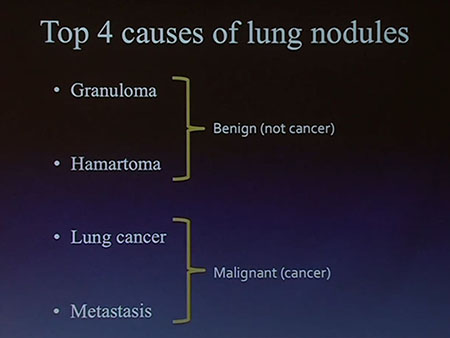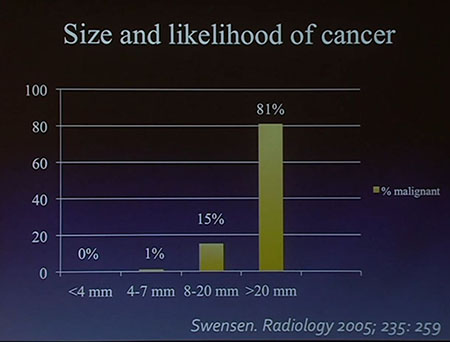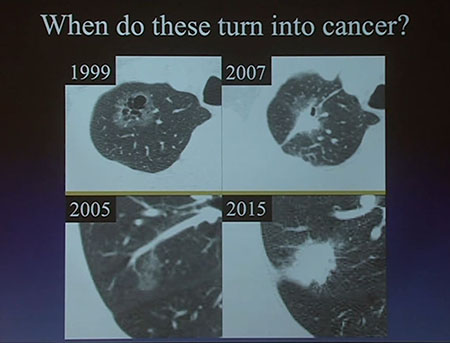How Vivid CT Scan Images are Reducing Lung Cancer Deaths
A chest computed tomography (CT) scan finds a lung nodule; what is the significance of that?
Brett Elicker, MD, chief of Cardiac & Pulmonary Imaging at the UC San Francisco Department of Radiology and Biomedical Imaging spoke about this topic as part of the UCSF Osher Mini Medical School lecture series. A video of his lecture can be seen below.
When a radiologist screens for lung cancer, they are looking for lung nodules (or masses). However, it is very common to have lung nodules that are not cancer. In fact, more than 50 percent of CT scans performed at UCSF will have at least one lung nodule, and the majority are benign (not cancer).

With this in mind, many patients might ask, "Am I going to die from this spot on my lung?" The answer is that a lung nodule is more likely to represent a granuloma or hamartoma as opposed to cancer. How do radiologists distinguish between benign and malignant lung nodules?
When doing a lung cancer screening, we are trying to find cancerous nodules with the understanding that 96 percent of the nodules we find are going to be benign. The most important factor in determining if a nodule is likely benign or malignant is its size, although there are also a variety of other features that a radiologist will assess on a CT scan. The chart below shows the percentage of nodules that are cancer based upon their size. For instance, only 1% of nodules between 4 to 7 mm in size are cancer.

When a nodule is likely benign a radiologist will sometimes recommend a repeat, low-dose CT scan of the chest in 3-12 months, just to be sure it is not cancer. If a nodule grows, then that raises the suspicion for cancer and further testing might be indicated. In the example below from 2005, a precancerous lesion turned into cancer in 2015, highlighting the importance of keeping watch over these nodules over time.

Overall, CT lung cancer screening was shown by the National Lung Screening Trial to reduce lung cancer deaths by up to 20 percent. Early detection benefits smokers ages 55–80, or those who quit within the last 15 years, and earlier detection allows for more treatment options. Visit our section on the UCSF Radiology CT Lung Cancer Screening Program for more information.
